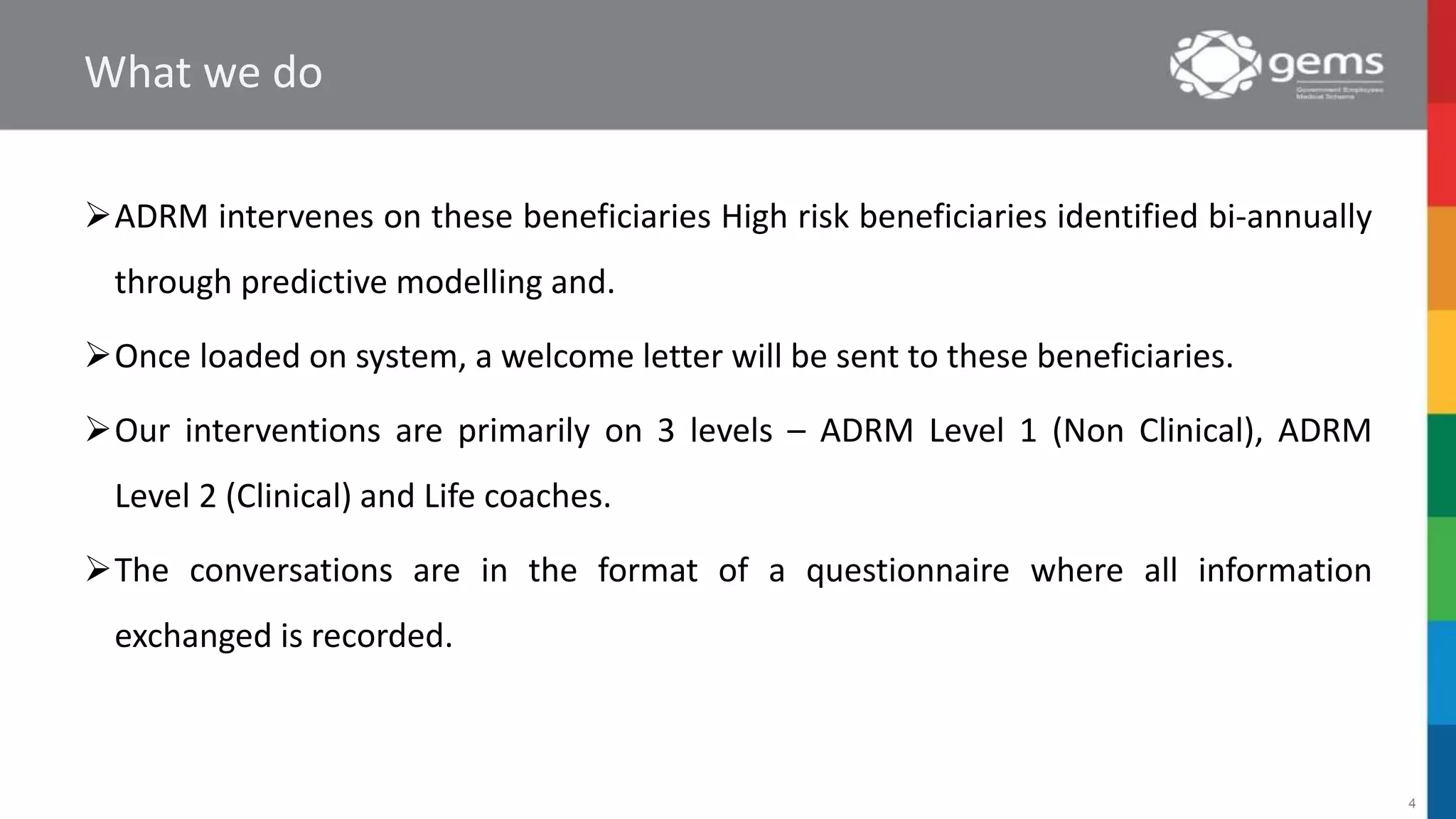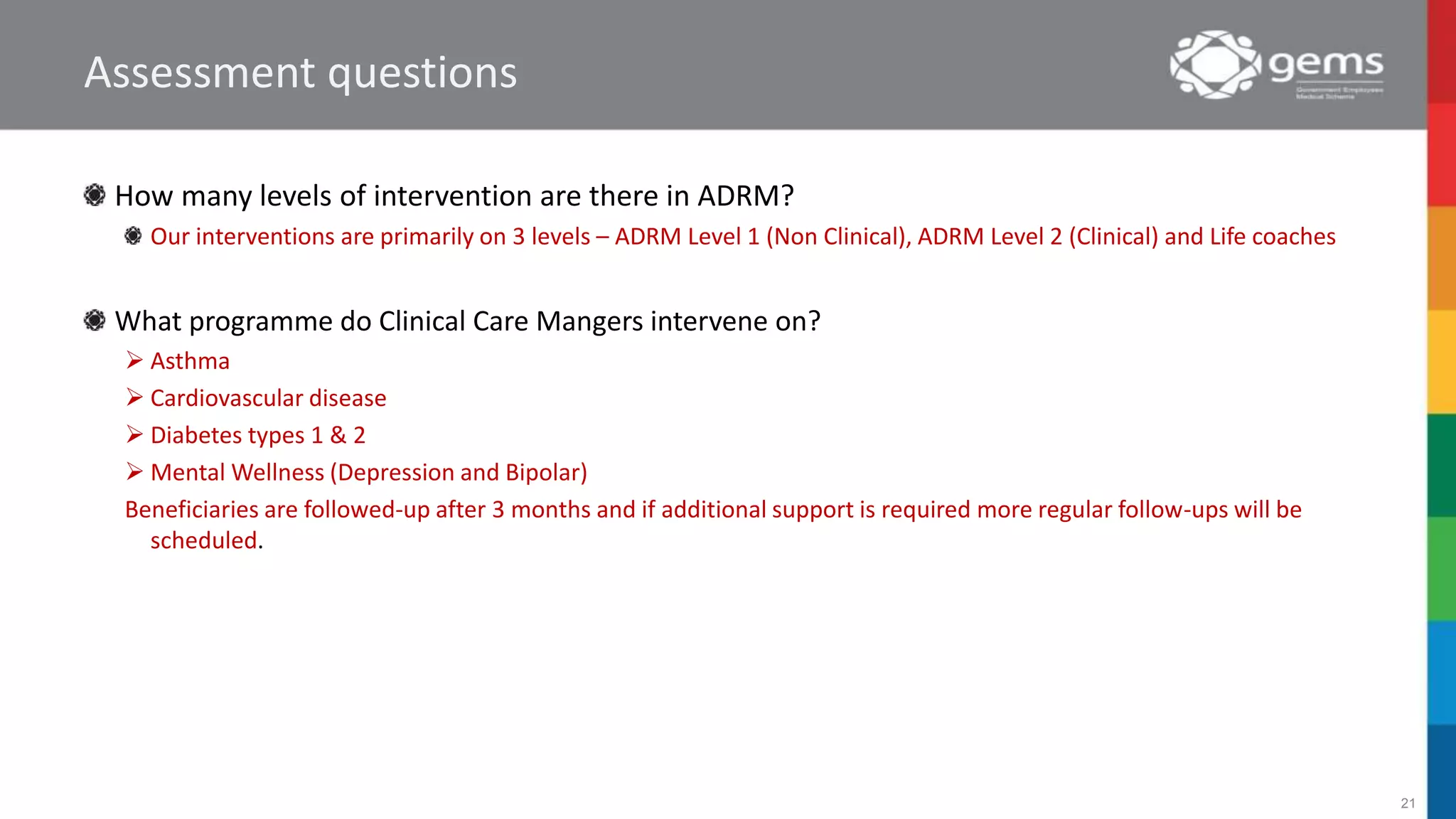The document outlines two health management programs: Active Disease Risk Management (ADRM) and Chronic Back & Neck Rehabilitation (CBNR). ADRM focuses on high-risk beneficiaries with co-morbidities through tailored interventions, while CBNR aims to rehabilitate back and neck issues to prevent surgeries. Both programs involve collaborations, follow-ups, and specific eligibility criteria for intervention and access.























